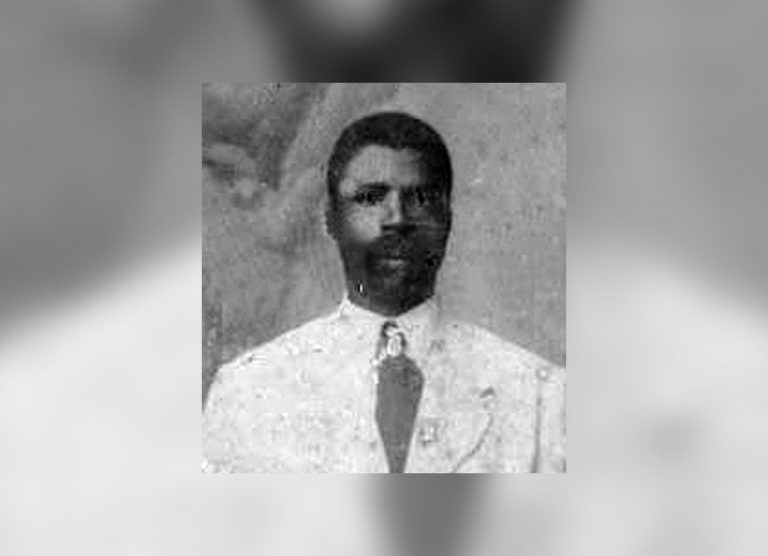Vélez was born in 1869, at the height of the struggles for Cuban independence. His father Vicente Vélez Piloña, a mambí, was married to Luisa Vázquez, both from Puerto Príncipe. On June 28th, 1887, he successfully completed his 5 years of high school. In this same year he competed for the Extraordinary Prize in the Literature section, where he succeeded.
Then he founded his Academy “VELEZ” located in his own home, where Mathematics, Bookkeeping and Complete Preparation for Baccalaureate were taught, on Lugareño Street No. 52. This artery was transcendental for Vélez, also for Nicolás Guillén, who pointed out:
On Lugareño Street, the buildings and places that I still remember are the fire station, on the corner of Martí; that of the police, between Rosa la Bayamesa and Cristo; the night school (I had another one, in the mornings) of Tomás Vélez, who was my high school teacher;…
The marriage of Tomás Vélez y Vázquez with the young Aurelia Betancourt Sánchez, broadened the range of his family and professional plans. From this lineage, 4 offspring were born: Dorila, Dr. in Pharmacy, Tomás, pedagogue and mathematics teacher like his father, Urbano and María Luisa, doctors in Pedagogy.
A multi pen on themes
In this face, the link with Nicolás was decisive, since in the Listed Literary, Artistic and Social Magazine, with a ten-year periodicity, directed by his student (Nicolás), Vélez was a regular collaborator with clairvoyant articles.
Of the 18 issues that the magazine had, 15 articles by Vélez were published. So his thought was expressed for the long haul throughout the magazine. Publication that came out on January 10th, 1923 until June 30th of the same year.
The first published text by maestro Vélez had the name: “Labor omniavincit”, just in the very first issue of the magazine. The author after praising its young founders for his great effort, condensed its purposes in the form of an editorial letter:
It is an essay, which collects the palpitations of national life in the order to which we refer, [the literary] but with the regional color, which perhaps, in the near future, may define a special character of our mental life.
He also predicted that great obstacles would come to them due to their great efforts and virtues, words that came true.
The Homeland, was the other great subject of Mr. Vélez. In the text “Let us love the Homeland” he reiterated the assumptions to invigorate the national sentiment … to settle our affairs on the horizon of the Homeland.
He was radical in the article entitled: “Nationalisms”, in tension with the context of the surrender of Cuban governments to foreign hands:
… The country goes, abandoning the great activities of the Nation to foreign hands. And our government, which calls itself republican, does not seem to observe that the country is sliding down an inclined plane, that by not putting energetic dikes on it, it evidently compromises our nationality.
Certainly the significance of his articles connected him with avant-garde and counter-hegemonic thinking. Many families in Camagüey still remember this odd teaching of Mr. Vélez.
Outcome
The newspaper El Camagüeyano, in August 1st, 1944 noted:
Don Tomás Vélez Vázquez, prestigious and beloved Camagüey mentor, died today in the capital. His body will be transferred to Camagüey by train, and will arrive tomorrow at twelve o’clock.
The death of the venerable countryman, who for so many years worked as a teacher in Camagüey, has caused us the deepest regret and surely that in all sectors of this society, the sad news must be received with true feeling.
Don Tomás Vélez Vázquez, who in addition to his dedication to his teaching held high political positions, enjoyed general appreciation and his death is undoubtedly a serious blow for Camagüey.
At 11:45 a.m. The people gathered at the Railway Station and then moved to the mortuary house in Lugareño Street #207. The honor guards remained until January 3rd. At 9:00 a.m. The burial took place in the General Cemetery of Camagüey, in the vault, No. 271 located in the first section of the South East Quadrant.
Legacy
Nowadays, the Vélez family has remained in the teaching profession during the XIX-XX and XXI centuries. Thomas with his light reached the pupils and relatives who learned from his teachings every day.
Translated by: Aileen Álvarez García







